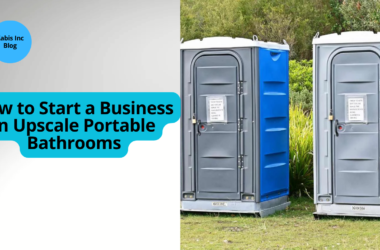The US-Canada shipping freight trade is a significant global hub, but the logistics process can be complex. Shippers face challenges at the physical or digital border, including delays due to incomplete paperwork, regulatory requirements, or inspection holds. Nearly one in six cross-border shipments experiences disruption.
This reality means that anyone shipping from the USA to Canada should prepare for more than just getting goods from point A to B. Smart planning goes far beyond packing boxes—companies must consider documentation accuracy, regulatory changes, seasonal weather impacts on transport, and strong carrier relationships. Focusing on these details is the difference between shipments that smoothly clear customs and those that risk becoming backlog statistics.
Essential Shipping Documentation and Compliance
A successful cross-border shipment starts with the proper documentation. United States-to-Canada shipments usually require a bill of lading, commercial invoice, and packing list as standard. However, depending on the nature of the goods, additional paperwork such as certificates of origin, special permits, or commodity-specific compliance documents may be needed. For example, electronics and agricultural products often demand further regulatory proof to confirm product safety or tariff status.
It’s not just about having documents, but their accuracy and accessibility. Even minor mistakes—like a mismatched serial number or missing postal code—can trigger expensive and time-consuming customs holds. That’s why many companies have moved toward standardized digital checklists and document portals, ensuring every shipment is reviewed thoroughly before departure. This saves time and enables quick record retrieval if customs officials request additional information. Leveraging digital workflows directly reduces human error, increases compliance, and supports faster shipment clearance. In an industry where a single paperwork slip-up can set off a domino effect of delays, attention to document preparation cannot be underestimated.
Smart Packing and Labeling for International Shipments
Proper packing and accurate labeling remain the most impactful details that drive international shipping success or create logistical headaches. Customs officials routinely open, inspect, and repack cross-border shipments, so durability is paramount. Fragile goods, electronics, perishables, and hazardous materials have unique packaging requirements to withstand border handling and environmental conditions. Investing in robust materials helps avoid breakage, lost goods, and customer dissatisfaction.
Beyond protective packaging, labels play a vital compliance role. Canadian import laws require bilingual labeling (English and French) for most consumer products, especially food, health, and retail goods. Non-compliance can delay customs clearance or even lead to rejected shipments. On average, properly labeled shipments are processed 20% faster than those with unclear information. Using barcodes for digital tracking, it’s best to include a comprehensive external label with product description, quantity, country of origin, and recipient details. These small details can shave hours or days off shipment cycles.
Recent Changes in US-Canada Trade Relations
Understanding current trade agreements is non-negotiable for smooth US-Canada shipping. The replacement of NAFTA with the United States-Mexico-Canada Agreement (USMCA) brought refreshed terms, affecting a broad spectrum of products from industrial machinery to e-commerce parcels. These changes impact tariff rates, duty exemptions, and product eligibility, sometimes shifting annually or by product code.
Even small businesses now find it necessary to review their compliance processes regularly—in some cases, every quarter—in response to regulatory updates or shifts in duty thresholds. Partnering with customs brokers and legal advisors who closely monitor these nuances is no longer just for big importers. For instance, a minor change in qualifying criteria for duty-free entry could impact landed costs on an entire inventory, and missing that update may lead to invoices with unexpected tax liabilities. Staying informed about trade updates ultimately saves time, money, and frustration.
Smooth Customs Clearance: Strategies and Examples
Customs clearance is often the most unpredictable phase of cross-border shipping. Proactive strategies—such as pre-submitting shipment data or real-time document sharing with customs brokers—are the new standard for high-performing logistics operations. Electronic customs clearance technology lets brokers and carriers view paperwork in advance, preventing last-minute surprises at the border.
Real-world case studies support these best practices. A US-based machinery distributor recently cut average clearance times from over two days to less than 24 hours simply by providing digital access to invoices and pre-alerts to customs contacts. The peace of mind and efficiency this generated paid off in both reduced overtime costs and improved client satisfaction. These examples underscore the upside to investing in transparent, technology-driven communication throughout the cross-border process.
Managing Costs and Avoiding Surprise Fees
Shipping budgets can be derailed by opaque fees, last-minute duties, inspection costs, or storage charges when shipments are delayed at the border. The unpredictable nature of these costs means shippers must plan for the unexpected. Regularly auditing freight bills to check accuracy and actively negotiating all-inclusive quotes can help keep costs predictable.
Many carriers offer consolidated or combined-rate shipping for customers who batch shipments together, significantly lowering the per-unit shipping expense. This method is particularly beneficial for smaller companies looking to scale. Experienced brokers and logistics providers are also adept at identifying ways to bypass common financial pitfalls, such as unnecessary detours or duplicate processing charges. By building relationships with these experts, businesses can save time and lower operating expenses over the long term.
Technology’s Role in Modern Shipping Logistics
The role of technology in cross-border logistics has evolved dramatically. These days, logistics is deeply intertwined with digital processes—from blockchain-powered document verification to end-to-end shipment tracking apps. Real-time tracking provides instant updates to senders and receivers, facilitating faster decisions when problems arise. Cloud-based management systems make sharing documentation and updating shipment statuses seamless, with less risk of lost paperwork or communication gaps.
The data is precise: companies implementing advanced tracking and compliance software see higher rates of on-time delivery, better damage control, and stronger customer loyalty. Efficiency gains aren’t just theoretical; by reducing manual intervention, digital solutions cut down processing errors and mean shipments face fewer snags at customs. These improvements are crucial for maintaining competitiveness and credibility in a fast-paced, highly regulated market.
Checklist: Steps to Build an Efficient Cross-Border Workflow
- Review and stay updated with changes in customs regulations and trade agreements affecting US-Canada shipments.
- Digitize all customs documentation and provide advanced copies to brokers and carriers.
- Use strong, compliant packing materials and clearly labeled bilingual packaging for every shipment.
- Select carriers and customs brokers with established international experience.
- Utilize real-time tracking technology and maintain open communication with all supply chain partners.
- Periodically reassess shipping contracts and audit costs, and refine processes based on performance data.
Frequently Asked Questions
- Do I need a customs broker to ship to Canada? While a broker isn’t necessary, they are strongly recommended, especially for regular shipments or goods with specific compliance needs. Customs brokers navigate paperwork, tariffs, and regulatory changes, reducing costly errors and helping expedite shipments.
- How can I avoid delays at the border? Pre-clear shipments with accurate digital documentation, partner with experienced carriers, and proactively communicate changes to all stakeholders. Mitigating mistakes ahead of time is the key to fast customs processing.
- What’s the most common mistake in cross-border shipping? Incomplete or inaccurate documentation is the easiest way for a shipment to be delayed or even returned. Diligence in paperwork preparation pays off more than any other preparatory step.







